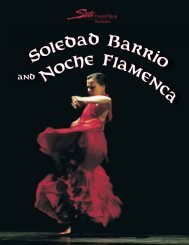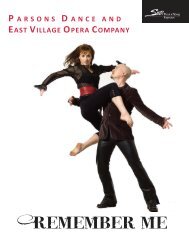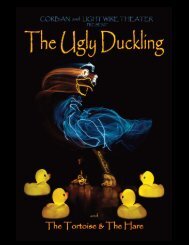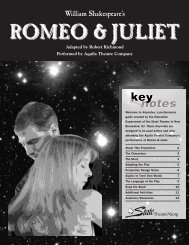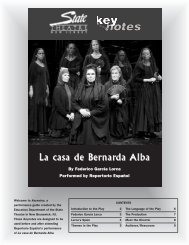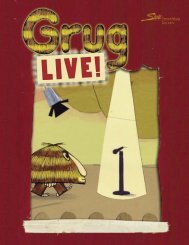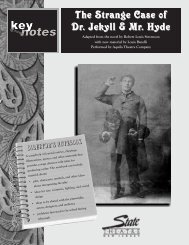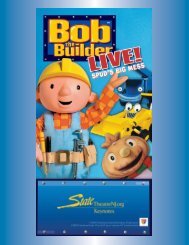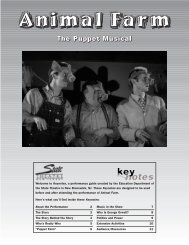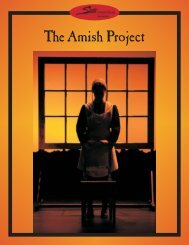Drumline 2011 Keynotes:Layout 1.qxd - State Theatre
Drumline 2011 Keynotes:Layout 1.qxd - State Theatre
Drumline 2011 Keynotes:Layout 1.qxd - State Theatre
Create successful ePaper yourself
Turn your PDF publications into a flip-book with our unique Google optimized e-Paper software.
Marching Bands 5<br />
Marching bands evolved out of<br />
military bands. Originally,<br />
instruments such as drums and<br />
bugles were used to direct the<br />
movement of troops on the battlefield<br />
or set a marching pace for soldiers.<br />
Many aspects of military bands survive<br />
today in marching bands—from the<br />
commands used to direct the formation (“About face!”<br />
“Forward march!”) to the precision-drilled marching<br />
formations and military-style uniforms. As music became less<br />
important in battle, military bands were increasingly used for<br />
ceremonial occasions and public concerts. New instruments<br />
were invented, and composers such as Johann Strauss and John<br />
Philip Sousa wrote music for brass and military bands.<br />
Field musicians, particularly the drummers, had a long history<br />
of staging drumming competitions to demonstrate their skill.<br />
Separate from the military bands, these demonstration<br />
parade units consisted of the traditional field music units and<br />
color guards bearing rifles and swords. After World War II, the drum corps (bugles,<br />
drums, and color guards) shifted from parade activity to field shows. The field,<br />
often an athletic playing field, provided the space for more ambitious and<br />
complex demonstrations of marching maneuvers.<br />
Today’s marching bands typically include brass, percussion, and<br />
woodwind instruments. Some marching bands can have upwards of 300<br />
members—plus dancers and color guard. The band featured in DrumLine Live!<br />
consists of about 30 band members and 5 dancers. They are a show band, the<br />
type of band most commonly seen during football halftime shows.<br />
You can get an idea of oldstyle<br />
American military<br />
drumming by watching a<br />
sample by the Army Band’s<br />
“Old Guard” of authentic<br />
pre-1900 regimental<br />
drumming styles.<br />
The<br />
very first<br />
halftime show<br />
was performed by the<br />
University of Illinois<br />
Marching Illini against<br />
the University of<br />
Chicago in<br />
1907.<br />
Design Your Own Halftime Show!<br />
Does your school have a marching band After you have seen the<br />
performance of DrumLine Live!, think about elements of the production that<br />
could be used by your school’s band. Was there a piece of music you especially<br />
liked A costume design Props Choreography<br />
Working with several classmates, create your own production design for a<br />
marching band number that could be performed by your school ensemble at<br />
halftime. Make sure to specify as much detail as possible. Find a recording of<br />
the music you would use and decide which marching-band instruments<br />
would play. Sketch the costumes, scenery, and props. Work out some of<br />
the steps for the choreography. Think about the lighting<br />
design. Then present your concept to the rest of the<br />
class. Which of your ideas did they like most



